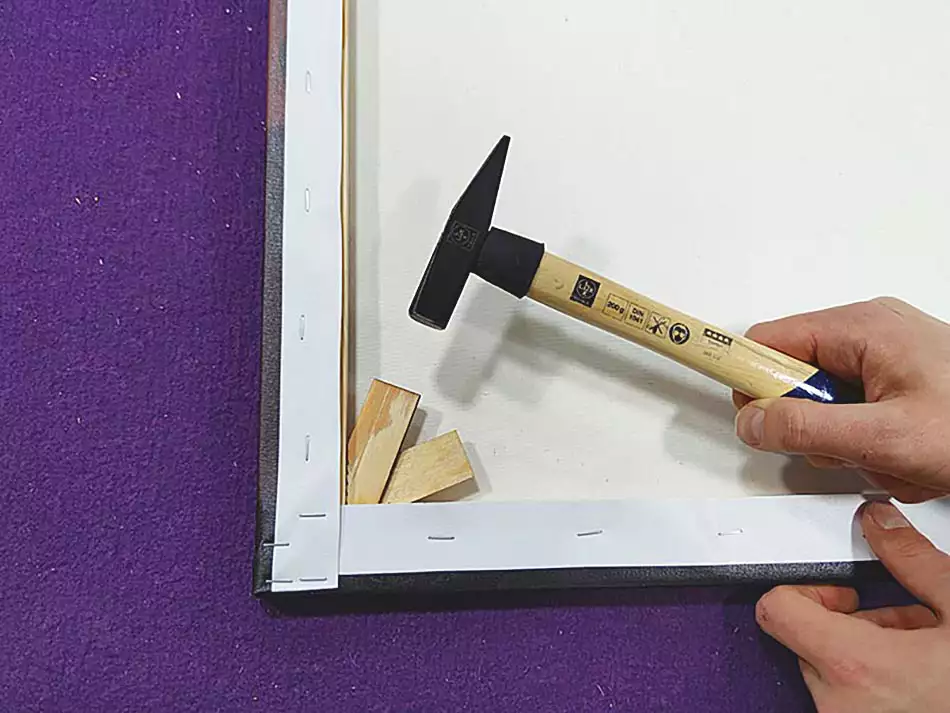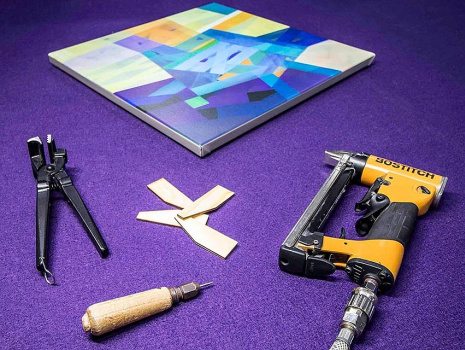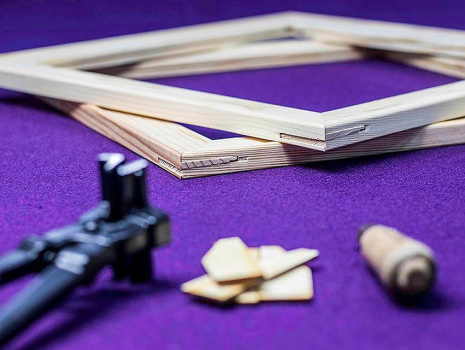Canvas stretching
Stretching over a wooden frame is the classic, standard way of processing canvas paintings and prints.
*We stretch only canvas prints made by us. The canvas image must be prepared for stretching, for prints made earlier without extra media - stretching is technically not possible.
Stretching by pine stretcher bars transforms our canvas print - or canvas picture - into a firm, strong object, that you can hang straight on your wall, or you can put in a gallery frame.
Quality pine wood stretcher bars
We use high quality, pinewood bars, pre-cut to the desired size, with wedges in each corner, and cross-bars for bigger sizes - to make the canvas as tight and strong as possible. There are many low quality stretchers on the market, that lean, curve and slack with time - ours will remain impeccable for decades (just like our prints, most of them come with 80-100 years of guarantee). The stretcher frames are available in simple (2cm) and double (4cm) depth, with the double being a more exclusive design, for bigger pictures. For larger images, we recommend a thicker and wider (2.5 cm thick, 6 cm wide) bar, because pages over 130 cm can withstand very strong tension.
We carefully hand-stretch our canvases onto the frames, and fix the border of the canvas to the back of the frame with pneumatic nail-guns - so the frame is totally invisible from the front, wrapped in canvas.
For the side edges of the stretcher frame we have three options:
âĒ bleed the picture fully on the edges
âĒ mirror the picture onto the edges
âĒ print the edges with one solid color
The minimum size for frames is 30cm, and the standard sizes for bars are numbers ending with 0 and 5cm - but we can make any standard size for free - it just makes the process 1-2 days longer. The maximum width we can print from canvases is 150cm, which leads to a 140cm maximum stretcher frame size on the shorter edge. The largest stretched canvas we can technically make is 140x300cm. We make every picture with hangers adequate for its size, free of charge.
Hint
The canvas is a woven fabric made of fibres, and has the natural property of loosening a little over time. If you find that the surface of the canvas is a bit wavy, you can stretch it.
Hang the canvas from the wall, stand it on a table, turn it around so that you have easy access to the back. Use a small hammer to gently hammer the top edge of the wedges, first two diagonally, then the other two. Always rotate the blind frame 90 degrees so that the wedge stretches the batten on the table. Each time you stretch the wedge, watch the change and stretch just enough to smooth out the front of the image. Be careful with the hammer, don't stretch too much or the canvas may tear!

Multi-panel canvas picture
You can also create larger wall decorations from more pieces of canvas prints by pasting several details together. This is called a multi-panel canvas picture. You should leave a 5cm gap between the panels, both horizontally and vertically. This way, the missed bands are visible at the edges of the sides, and the human eye will see them as one image from a distance.

Each picture is supplied with a hanger appropriate to its size (and weight), included in the price.
We have a lot of options for framing of stretched canvas pictures, please see them here.
For long distance shipping, however, we donât recommend stretched frames. They donât bear the hardship of being shipped around the world (temperature changes, being squeezed or thrown around) too well - so if you plan on ordering from afar, weâd suggest a canvas print in a roll. Canvas stretching is a very common procedure that is done in most framing shops around the world, where they follow basically the same standards. This leads to a better result, and a much lower shipping cost as well.

 HU
HU




